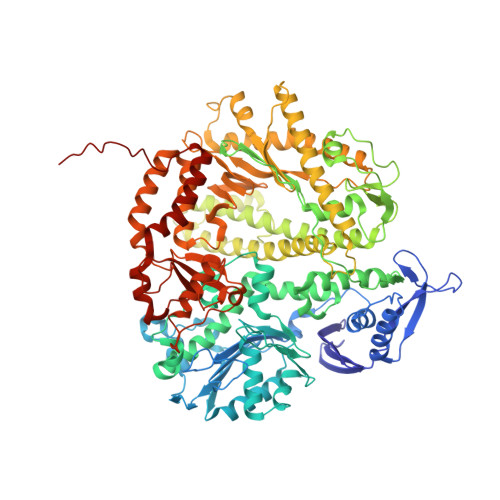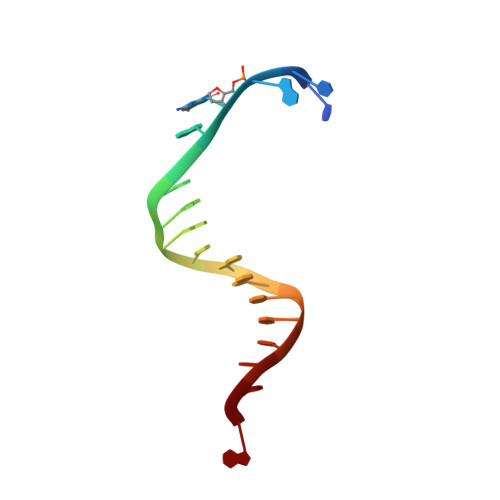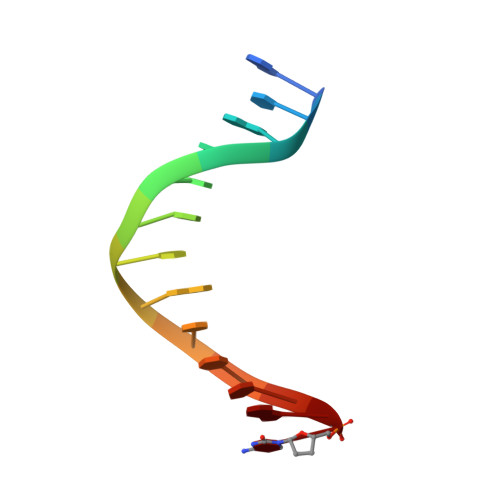Substitution of Ala for Tyr567 in RB69 DNA polymerase allows dAMP to be inserted opposite 7,8-dihydro-8-oxoguanine .
Beckman, J., Wang, M., Blaha, G., Wang, J., Konigsberg, W.H.(2010) Biochemistry 49: 4116-4125
- PubMed: 20411947
- DOI: https://doi.org/10.1021/bi100102s
- Primary Citation of Related Structures:
3LZI, 3LZJ - PubMed Abstract:
Accurate copying of the genome by DNA polymerases is challenging due in part to the continuous damage inflicted on DNA, which results from its contact with reactive oxygen species (ROS), producing lesions such as 7,8-dihydro-8-oxoguanine (8-oxoG). The deleterious effects of 8-oxoG can be attributed to its dual coding potential that leads to G --> T transversions. The wild-type (wt) pol alpha family DNA polymerase from bacteriophage RB69 (RB69pol) prefers to insert dCMP as opposed to dAMP when situated opposite 8-oxoG by >2 orders of magnitude as demonstrated using pre-steady-state kinetics (k(pol)/K(d,app)). In contrast, the Y567A mutant of RB69pol inserts both dCMP and dAMP opposite 8-oxoG rapidly and with equal efficiency. We have determined the structures of preinsertion complexes for the Y567A mutant with dATP and dCTP opposite a templating 8-oxoG in a 13/18mer primer-template (P/T) at resolutions of 2.3 and 2.1 A, respectively. Our structures show that the 8-oxoG residue is in the anti conformation when paired opposite dCTP, but it flips to a syn conformation forming a Hoogstein base pair with an incoming dATP. Although the Y567A substitution does not significantly change the volume of the pocket occupied by anti-8-oxoG, it does provide residue G568 the flexibility to move deeper into the minor groove of the P/T to accommodate, and stabilize, syn-8-oxoG. These results support the hypothesis that it is the flexibility of the nascent base pair binding pocket (NBP) in the Y567A mutant that allows efficient insertion of dAMP opposite 8-oxoG.
Organizational Affiliation:
Department of Molecular Biophysics and Biochemistry, Yale University, New Haven, Connecticut 06520-8024, USA.


















